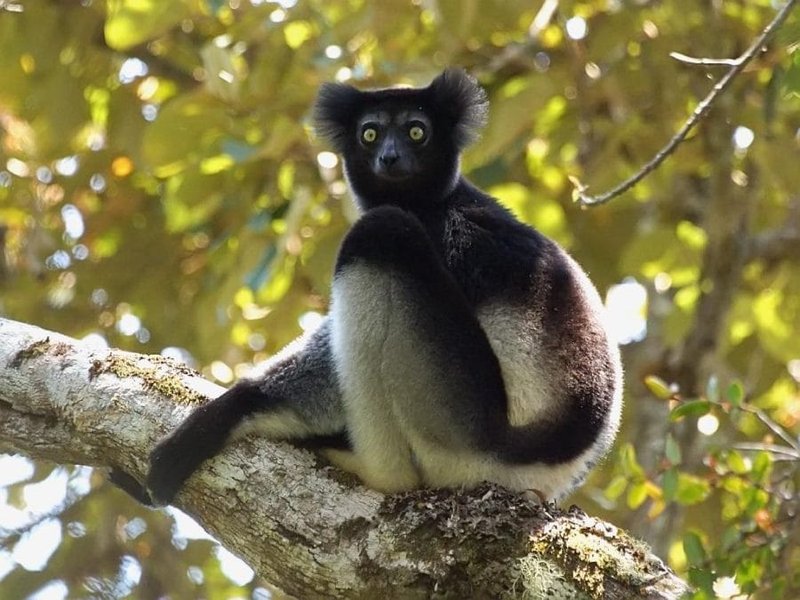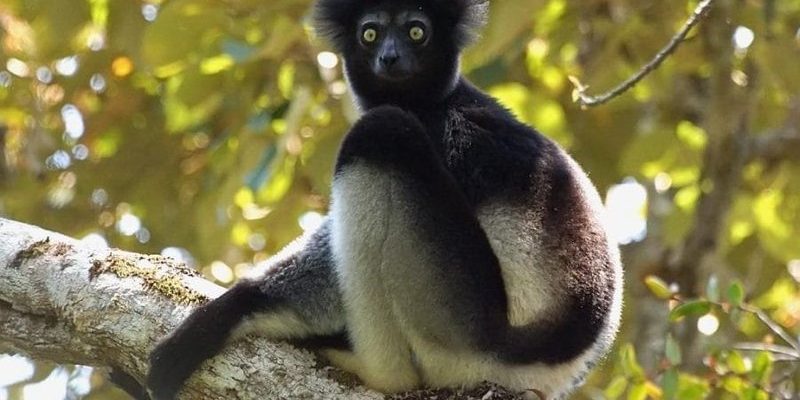
So, what exactly does the Indri do in its habitat, and why should we care? Think of them as the comedians of the forest, calling out to one another in songs that echo through the trees, but also as caretakers of their environment. Their presence is vital for maintaining the balance of the stunningly diverse world that surrounds them. Let’s dive deeper into the Indri’s essential roles and how their survival is intertwined with the health of Madagascar’s forests.
Understanding the Indri: A Unique Primate
Indris are fascinating creatures, known for their distinct physical traits and behaviors. They belong to the Lemur family and have adapted uniquely to their environment. Unlike many primates, Indris have no tails, which gives them a distinctive silhouette as they leap gracefully between branches.
These animals are primarily herbivores, feeding on leaves, fruits, and flowers. Their favorite foods include the leaves of the endemic trees of Madagascar. By munching on these plants, Indris not only provide a health check on plant populations but also contribute to maintaining the forest’s biodiversity.
Indris are also social animals, living in small family groups called “troops.” The way they communicate—through loud calls—can travel over long distances, helping them keep in touch with each other in the dense forests of Madagascar. Their vocalizations are not just for fun; they serve as a means to establish territory and bond with family members.
The Indri’s Role as Seed Dispersers
You might wonder how a small creature like the Indri impacts the larger ecosystem. Well, here’s the thing: they’re excellent seed dispersers! As they feed on fruits and leaves, they help in spreading seeds throughout their habitat.
When Indris consume fruit, they digest some parts while others pass through their system. This journey through their digestive tract often helps break down seed coats, making it easier for the seeds to germinate once they land back on the forest floor. This natural process is essential for the growth of various plant species and the overall health of Madagascar’s forests.
Without the Indri, many fruit-bearing plants would struggle to reproduce effectively. This could lead to a decrease in plant diversity, which would have ripple effects throughout the entire ecosystem. Fewer plants mean less food for other animals, and the balance of life in the forest could be thrown off entirely.
Indris as Indicators of Forest Health
Here’s an interesting point: the health of the Indri population can serve as an important indicator of the overall health of Madagascar’s forests. Their sensitivity to environmental changes makes them a valuable species for conservationists.
When their numbers decline, it often signals that something is wrong in their habitat—whether it’s deforestation, climate change, or habitat loss due to human encroachment. Monitoring Indri populations can help researchers understand how various factors affect forest ecosystems and can indicate the need for conservation efforts.
In a sense, protecting the Indri means protecting the forest. By ensuring their habitat remains intact, we safeguard countless other species that depend on the same environment for survival. It’s a powerful reminder that every creature, no matter how small, plays a role in the grand tapestry of life.
Threats to the Indri and Its Habitat
Despite their importance, the Indri faces numerous threats that endanger its survival. Deforestation is perhaps the most pressing issue. Madagascar has lost a significant portion of its forests due to logging, agriculture, and mining. This loss not only reduces the habitat available for Indris but also fragments their populations, making it harder for them to find mates and food.
Additionally, climate change is affecting weather patterns in the region, leading to unpredictable rainfall and shifting plant growth. As the plants that Indris rely on become scarce, their food sources dwindle, putting more pressure on their already vulnerable populations.
Another threat comes from hunting. While hunting Indris is not as common as it used to be, some communities still view them as a source of food or sport. This hunting, combined with habitat destruction, paints a grim picture for the future of Indris and the ecosystems they support.
The Importance of Conservation Efforts
Given the threats they face, conservation efforts for the Indri are critical. Local and international organizations have stepped up to protect their habitats and promote awareness about these unique primates. One approach is educating local communities about the ecological benefits of preserving the Indri and their environment.
Moreover, protecting Madagascar’s forests means creating protected areas where these animals can thrive without the threat of deforestation or hunting. Initiatives that promote sustainable agriculture can also help reduce the pressure on the forests while providing food for local populations.
By prioritizing conservation, we not only help secure the future of the Indri but also ensure that Madagascar’s lush biodiversity remains intact for generations to come. After all, a healthy ecosystem contributes to clean air, water, and a stable climate that benefits us all.
How You Can Get Involved
So, you might be wondering how you can play a role in protecting these fascinating creatures and their habitats. Luckily, there are several ways to get involved, even from afar.
– Support Conservation Organizations: Many nonprofits and organizations focus on the protection of Madagascar’s wildlife. Donating to these groups or even volunteering your time can make a difference.
– Raise Awareness: Share what you’ve learned about the Indri and their importance in the ecosystem with friends and family. The more people know, the more likely they are to care!
– Sustainable Practices: Whether at home or in your community, adopting sustainable practices—like reducing waste, supporting local wildlife conservation, or promoting eco-friendly products—can contribute to global efforts for conservation.
Every little bit helps. You might not be swinging through the trees alongside the Indri, but you can still be a part of their journey.
A Future for the Indri
The future of the Indri is linked to the future of Madagascar’s forests. By understanding their role in the ecosystem, we become advocates for their protection.
Indris are not just enchanting animals; they’re integral players in the health of their environment. They help the plants grow, signal when something is amiss in the ecosystem, and are a reminder of how interconnected our world is.
As we learn more about these unique primates, let’s also take action to protect them. Because when we save the Indri, we’re not just saving a species—we’re preserving a whole world of life that thrives around them.
In a way, every voice counts, just like the calls of the Indri echoing through their forest home. Let’s make sure their voice is heard for many generations to come!

